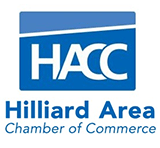Have you been thinking about getting an electric toothbrush? If so, you’re probably wondering how they compare to manual toothbrushes—do they actually do a better job? Do they reach spaces between your teeth more efficiently than a regular toothbrush? We are here to give the 411 on whether or not they’re worth the investment.
How Do Electric Brushes Stack Up to Manual Brushes?
As with most things, the answer isn’t a simple \”yes\” or \”no.\” An electric toothbrush is, in general, better than a traditional toothbrush. However, a manual toothbrush can get the job done just as effectively as long as your brushing technique is as good as your hygienist’s! This might be a tall order, so for most patients, the option to use an electric toothbrush really comes down to:
- Your recommended treatment plan and specific oral health concerns
- Good oral hygiene and brushing habits, established and practiced every day
Based on these criteria, you may benefit from an electric toothbrush or be fine with a manual one.
What Research Exists on the Difference Between the Two?
There are studies out there that suggest electric toothbrushes are better. For example, one study found that found rotating oscillating electric brush heads were shown to reduce dental plaque by 21% and gingivitis by 11% compared to manual brushes after 3 months of use. Another study found that more than 80% of participants in the study had positive effects from using an electric toothbrush. Additionally, an electric toothbrush offers 6,000 to 30,000 strokes per minute, but the average strokes per minute for an manual toothbrush is only 200.
Who Can Benefit from an Electric Toothbrush?
While both types of brushes will get the job done, there are definitely some people who can benefit from an electric toothbrush. These individuals include:
- Patients with periodontal disease who need to invest in additional oral hygiene tools to improve their habits
- Those who dislike brushing their teeth or do so less often than they should.
- People who struggle to brush for the full recommended 2 minutes each time. You can buy an electric toothbrush that gives an indicator every 30 seconds, prompting you to move the brush to the next quadrant of your mouth or one with a 2 minute timer to ensure you brush for the entire recommended time.
- Children tend to enjoy electric toothbrushes. For that reason, they may be inclined to brush longer or more often if they have a powered brush.
- People with arthritis or mobility issues may find an electric brush easier to use.
- Anyone who brushes too hard may want to consider a powered brush. There are electric models that warn you if you’re pressing too firmly when brushing.
And even if you don’t fall into any of these categories but prefer an electric toothbrush, by all means use one! Additionally, there are other at home dental products that can help support good oral hygiene too, like Waterpiks and Air Flossers, for those who don’t enjoy traditional flossing.
What Should I Look for When Selecting an Electric Toothbrush?
Don’t worry so much about the brand. Instead, pay attention to how the brush is powered. We recommend a brush with a rechargeable base. Battery-powered options can slow down over time which you may not notice immediately, making your brushing less effective than it could be.
Additionally, if you tend to cut short your brushing time—and that’s most people—we recommend a model that can alert you when you’ve brushed for the minimum of 2 minutes. Likewise, if you’re a “hard” brusher, select a brush that indicates when you’re applying too much pressure.
Whatever you choose, it is critical you use the toothbrush you do have at least twice a day for 2 minutes at a time. This habit—coupled with daily flossing and regular dental checkups—will help keep your teeth and gums in tip-top shape.





